Unlocking the potential of circulating small extracellular vesicles in neurodegenerative disease through targeted biomarkers and advancements in biosensing
Neurodegenerative diseases (NDDs) gradually affect neurons impacting both their function and structure, and they afflict millions worldwide. Detecting these conditions before symptoms arise is cruci
[...] Read more.
Neurodegenerative diseases (NDDs) gradually affect neurons impacting both their function and structure, and they afflict millions worldwide. Detecting these conditions before symptoms arise is crucial for better prognosis and duality of life, given that the disease processes often begin years earlier. Yet, reliable and affordable methods to diagnose NDDs in these stages are currently lacking. There’s a growing interest in using circulating extracellular vesicles (EVs), like small EVs (sEVs) also known as exosomes, as potential sources of markers for screening, diagnosing, and monitoring NDDs. This interest stems from evidence showing that these EVs can carry brain pathological proteins implicated in NDD pathology, and they can even traverse the blood-brain barrier. This review focuses on the creation of EVs, particularly sEVs with a size of less than 200 nanometers, methods for isolating sEVs, and recent advancements in biosensor development to detect NDD-related markers found in sEVs. Furthermore, it explores the potential of sEVs in diagnosing four major NDDs: Alzheimer’s disease (AD), Parkinson’s disease (PD), Huntington’s disease (HD), and multiple system atrophy (MSA).
Saqer Al Abdullah ... Kristen Dellinger
Neurodegenerative diseases (NDDs) gradually affect neurons impacting both their function and structure, and they afflict millions worldwide. Detecting these conditions before symptoms arise is crucial for better prognosis and duality of life, given that the disease processes often begin years earlier. Yet, reliable and affordable methods to diagnose NDDs in these stages are currently lacking. There’s a growing interest in using circulating extracellular vesicles (EVs), like small EVs (sEVs) also known as exosomes, as potential sources of markers for screening, diagnosing, and monitoring NDDs. This interest stems from evidence showing that these EVs can carry brain pathological proteins implicated in NDD pathology, and they can even traverse the blood-brain barrier. This review focuses on the creation of EVs, particularly sEVs with a size of less than 200 nanometers, methods for isolating sEVs, and recent advancements in biosensor development to detect NDD-related markers found in sEVs. Furthermore, it explores the potential of sEVs in diagnosing four major NDDs: Alzheimer’s disease (AD), Parkinson’s disease (PD), Huntington’s disease (HD), and multiple system atrophy (MSA).
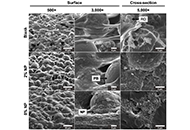 Nanoparticle-functionalized acrylic bone cement for local therapeutic delivery to spine metastasesOpen AccessOriginal ArticleAim: Polymethylmethacrylate bone cement is often used to reconstruct critical-sized defects generated by the surgical resection of spinal metastases. Residual tumor cells after a resection can dr [...] Read more.Ateeque Siddique ... Derek H. RosenzweigPublished: April 28, 2024 Explor BioMat-X. 2024;1:135–157
Nanoparticle-functionalized acrylic bone cement for local therapeutic delivery to spine metastasesOpen AccessOriginal ArticleAim: Polymethylmethacrylate bone cement is often used to reconstruct critical-sized defects generated by the surgical resection of spinal metastases. Residual tumor cells after a resection can dr [...] Read more.Ateeque Siddique ... Derek H. RosenzweigPublished: April 28, 2024 Explor BioMat-X. 2024;1:135–157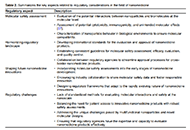 Navigating regulatory challenges in molecularly tailored nanomedicineOpen AccessCommentaryNanomedicine, a convergence of nanotechnology and medical sciences, has unleashed transformative potential in healthcare. However, harnessing the benefits of nanomedicine requires a thorough underst [...] Read more.Ajay Vikram Singh ... Paolo ZamboniPublished: April 25, 2024 Explor BioMat-X. 2024;1:124–134
Navigating regulatory challenges in molecularly tailored nanomedicineOpen AccessCommentaryNanomedicine, a convergence of nanotechnology and medical sciences, has unleashed transformative potential in healthcare. However, harnessing the benefits of nanomedicine requires a thorough underst [...] Read more.Ajay Vikram Singh ... Paolo ZamboniPublished: April 25, 2024 Explor BioMat-X. 2024;1:124–134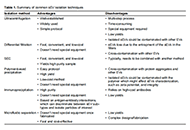 Unlocking the potential of circulating small extracellular vesicles in neurodegenerative disease through targeted biomarkers and advancements in biosensingOpen AccessReviewNeurodegenerative diseases (NDDs) gradually affect neurons impacting both their function and structure, and they afflict millions worldwide. Detecting these conditions before symptoms arise is cruci [...] Read more.Saqer Al Abdullah ... Kristen DellingerPublished: April 24, 2024 Explor BioMat-X. 2024;1:100–123
Unlocking the potential of circulating small extracellular vesicles in neurodegenerative disease through targeted biomarkers and advancements in biosensingOpen AccessReviewNeurodegenerative diseases (NDDs) gradually affect neurons impacting both their function and structure, and they afflict millions worldwide. Detecting these conditions before symptoms arise is cruci [...] Read more.Saqer Al Abdullah ... Kristen DellingerPublished: April 24, 2024 Explor BioMat-X. 2024;1:100–123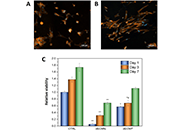 Effects of cold plasma treatment on the biological performances of decellularized bovine pericardium extracellular matrix-based films for biomedical applicationsOpen AccessOriginal ArticleAim: Since decades, decellularized extracellular matrix (dECM)-derived materials have received worldwide attention as promising biomaterials for tissue engineering and biomedical applications. So [...] Read more.Maria Elena Lombardo ... Diego MantovaniPublished: April 23, 2024 Explor BioMat-X. 2024;1:84–99
Effects of cold plasma treatment on the biological performances of decellularized bovine pericardium extracellular matrix-based films for biomedical applicationsOpen AccessOriginal ArticleAim: Since decades, decellularized extracellular matrix (dECM)-derived materials have received worldwide attention as promising biomaterials for tissue engineering and biomedical applications. So [...] Read more.Maria Elena Lombardo ... Diego MantovaniPublished: April 23, 2024 Explor BioMat-X. 2024;1:84–99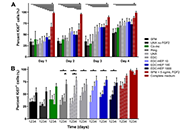 A biomimetic approach to modulating the sustained release of fibroblast growth factor 2 from fibrin microthread scaffoldsOpen AccessOriginal ArticleAim: The pleiotropic effect of fibroblast growth factor 2 (FGF2) on promoting myogenesis, angiogenesis, and innervation makes it an ideal growth factor for treating volumetric muscle loss (VML) i [...] Read more.Meagan E. Carnes ... George D. PinsPublished: April 23, 2024 Explor BioMat-X. 2024;1:58–83
A biomimetic approach to modulating the sustained release of fibroblast growth factor 2 from fibrin microthread scaffoldsOpen AccessOriginal ArticleAim: The pleiotropic effect of fibroblast growth factor 2 (FGF2) on promoting myogenesis, angiogenesis, and innervation makes it an ideal growth factor for treating volumetric muscle loss (VML) i [...] Read more.Meagan E. Carnes ... George D. PinsPublished: April 23, 2024 Explor BioMat-X. 2024;1:58–83